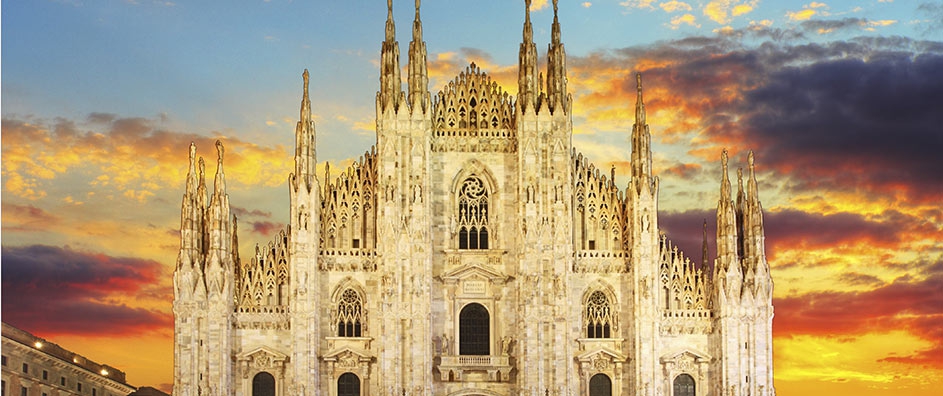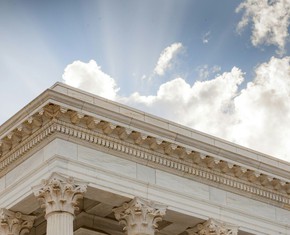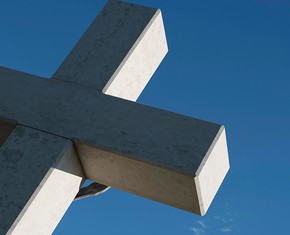The views expressed in our content reflect individual perspectives and do not represent the authoritative views of the Baha'i Faith.
For many Christians raised with a literal explanation of the resurrection, a symbolic interpretation may seem hard to accept at first. But these allegorical explanations aren’t new. They are at least as old as the second century Christian apologist, Origen and his De Principiis. Reviewing his work, a Christian scholar writes:
Origen was convinced that the symbols of early Christian eschatology heaven, hell, resurrection, the Second Coming of Christ were not to be rejected merely because literalistic believers understood them in a crude and prosaic way… (He) criticizes the notion that the resurrection of the body means a literal resuscitation of this present physical frame. – Chadwick, p. 106.
Many prominent modern scholars agree. One bishop of the Church of England writes of the resurrection:
From the summaries which we have given it is difficult to avoid the conclusion that we are in the domain of religious romance, not of religious history. The early Christians were convinced the Spirit of the Lord Jesus was with them. To their great joy His peace rested upon them. His continual guidance was their fundamental certainty. They received such guidance when critical decisions had to be made. The Lord Himself was felt to be present at their gatherings and particularly at ’the breaking of the bread.’ How came it that He was thus present and active? He obviously must be alive. But, if alive, He must have risen from the dead. The stories of the empty tomb and of the resurrection appearances are attempts to explain how He thus rose to eternal life, attempts to buttress spiritual certainty by material fact. Religious conviction began the story: the activity of faith with impressive seriousness added details. – The Rise of Christianity, p. 170 (quoted in Ferraby’s All Things Made New, p. 178.)
A second bishop, Dr. David Jenkins of Durham, concurs. For him, the rational explanation of the empty tomb means the disciples stole the body. Michael Goulder, a Staff Tutor in Theology at Birmingham University, writes of Peter’s resurrection experience:
On Easter Sunday morning Peter achieved the same type of resolution, a conversion experience in the form of a vision. The amazing ’truth’ dawned on him, to solve all his problems: Jesus was not dead after all he had risen again, he was raised to God’s right hand in heaven, he would soon return to establish his kingdom in power. Peter’s experience was soon told to others, and so great is the power of hysteria in a small community that in the evening, in the candlelight, with fear of arrest still a force, and hope of resolution budding in them too, it seemed as if the Lord came through the locked door to them, and away again… To the first Christians these conversion visions seemed plainly to be miracles. Jesus was alive, for they had seen him; God had vindicated Jesus as his Son. The first traditions were all in the form, ’He was seen…’ Half a century later Luke and John added stories that emphasize his materiality: how the disciples ate with him, and doubters touched him. The Myth of God Incarnate, edited by John Hick. pp. 5960.
 Another well-known Christian scholar, James Mackey, concurs; and thus offers an explanation about the meaning of preaching the resurrection. He writes:
Another well-known Christian scholar, James Mackey, concurs; and thus offers an explanation about the meaning of preaching the resurrection. He writes:
The role of resurrection preaching, then, the role of stories about the resurrection, is to record, in ’mythological’ terms, this known fact of the continuing preaching and continuing faith of his followers. Jesus the Man and the Myth SCM Press, 1979, p.89.
These sophisticated, metaphorical understandings of the resurrection fall clearly within the range of accepted modern Christian thought on the subject. We know now that the resurrection was and is a psychological event. The physical resurrection, as popularly believed, never happened.
Which leads us to this important realization — the psychological resurrection actually represents the greater miracle, and the one operating in Christianity ever since the days of Jesus’ crucifixion. This renders the existential encounter with the spiritual reality of Jesus, the living Lord, the most important fact of the resurrection – not meeting a physical body. This miracle is greater because it is immanent, everlasting and universal; it can happen in us all, and does not require the physical body of Jesus.
In fact, as you’ve seen in this series of essays, Baha’is believe that the resurrection refers to the faith the disciples found several days after Jesus died. All of Christianity depends on this faith, which gives us the awareness that the Lord did not perish:
As to the light thou dost witness: It is not an earthly light (phenomenal); nay, rather, it is a heavenly light. It cannot be seen by the sight; nay, rather, it is perceived by the insight.
As to the resurrection of the body of Christ three days subsequent to His departure: This signifies the divine teachings and spiritual religion of His Holiness Christ, which constitute His spiritual body, which is living and perpetual forevermore. By the “three days” of His death is meant that after the great martyrdom, the penetration of the divine teachings and the spread of the spiritual law became relaxed on account of the crucifixion of Christ. For the disciples were somewhat troubled by the violence of divine tests. But when they became firm, that divine spirit resurrected and that body — which signifies the divine word — arose. – Abdu’l-Baha, Tablets of Abdu’l-Baha v1, p. 192.
















Comments
Sign in or create an account
Continue with Googleor